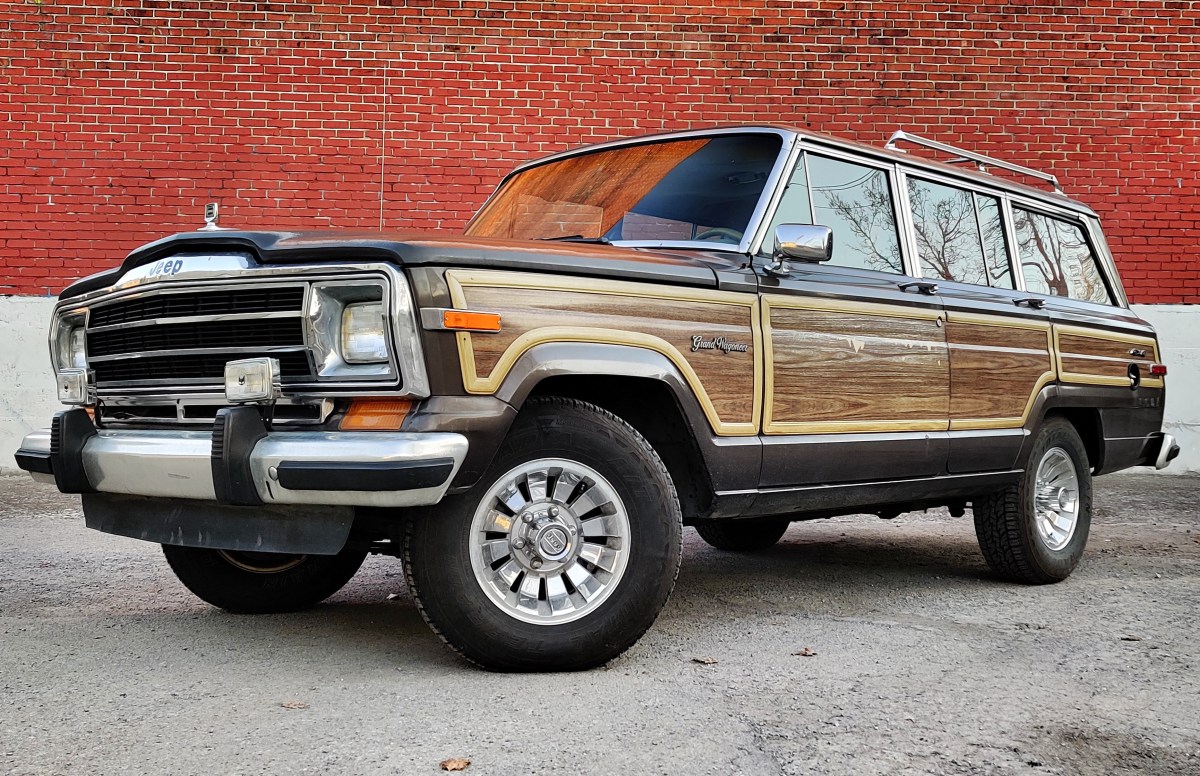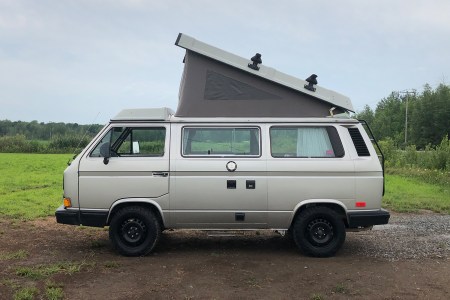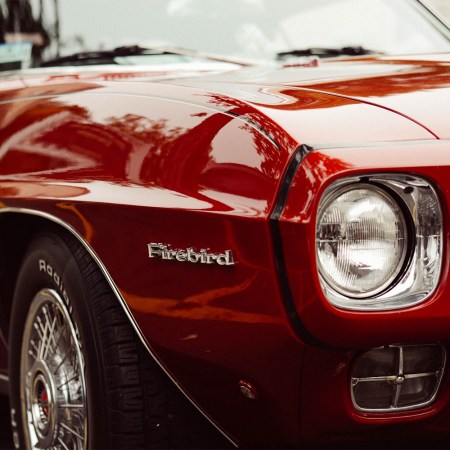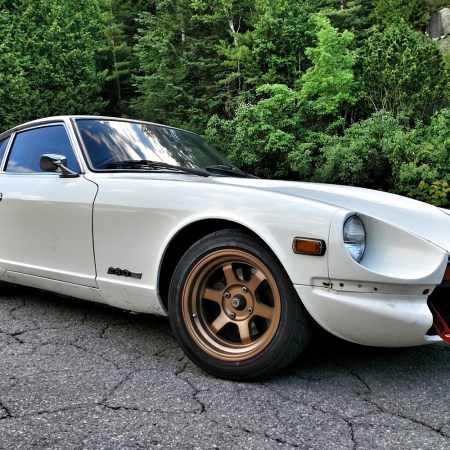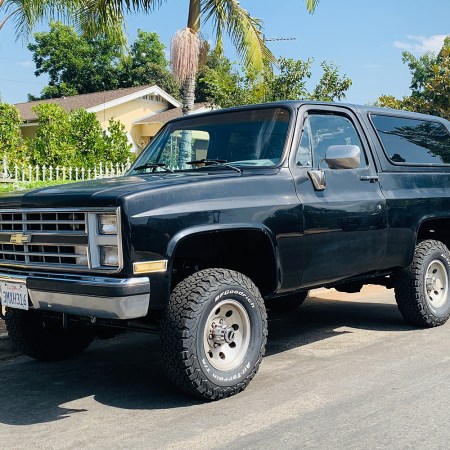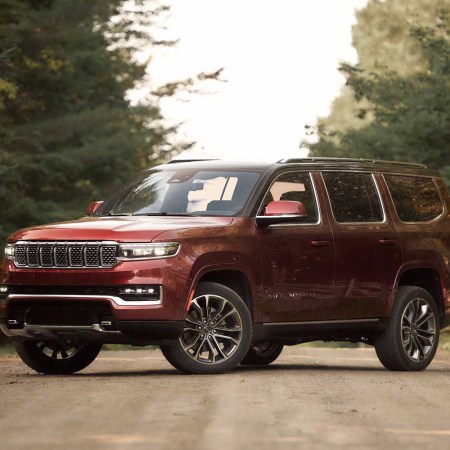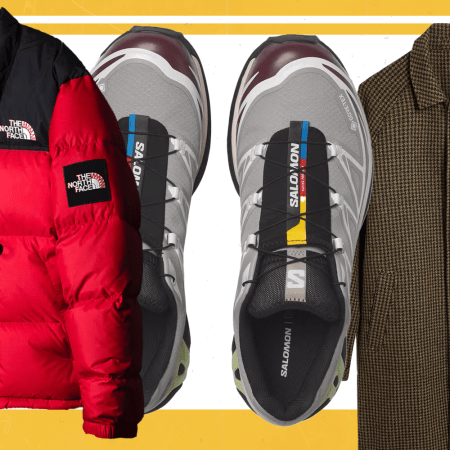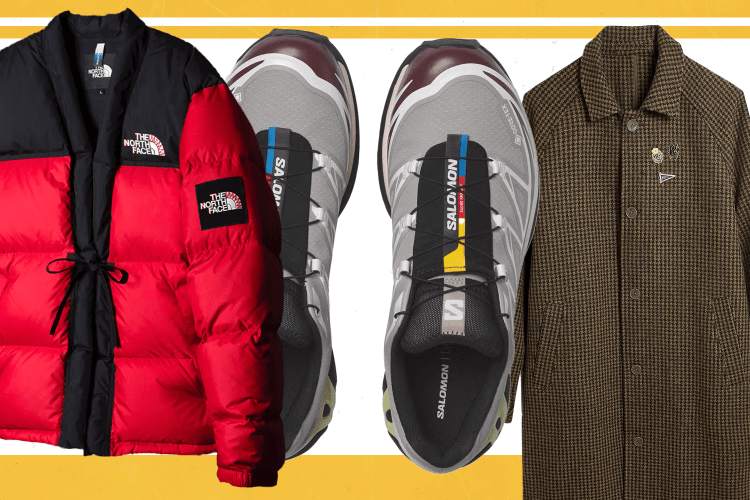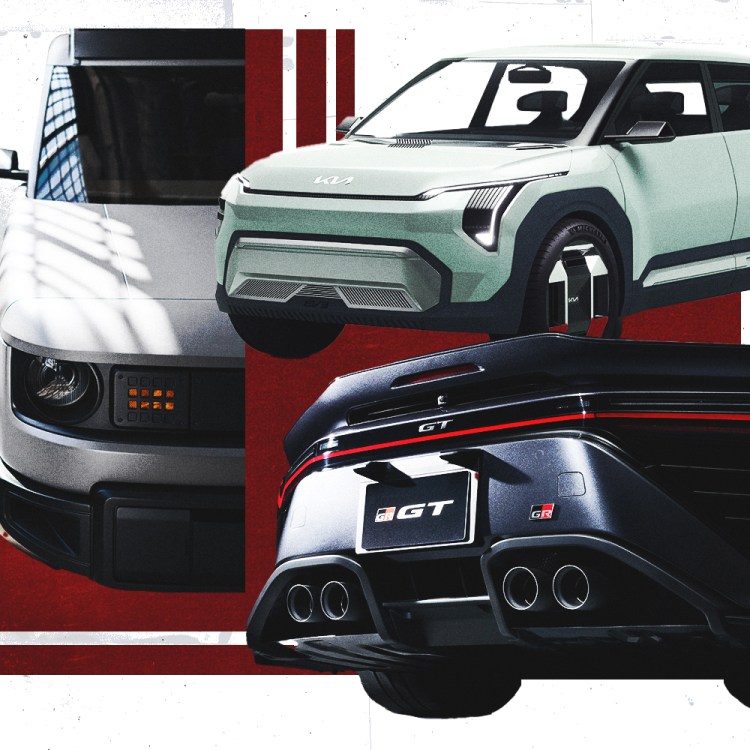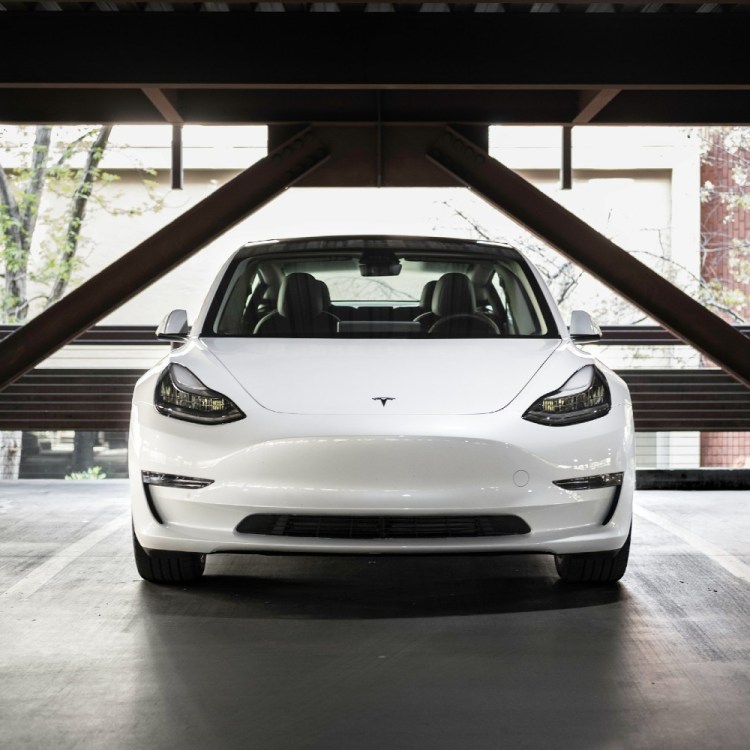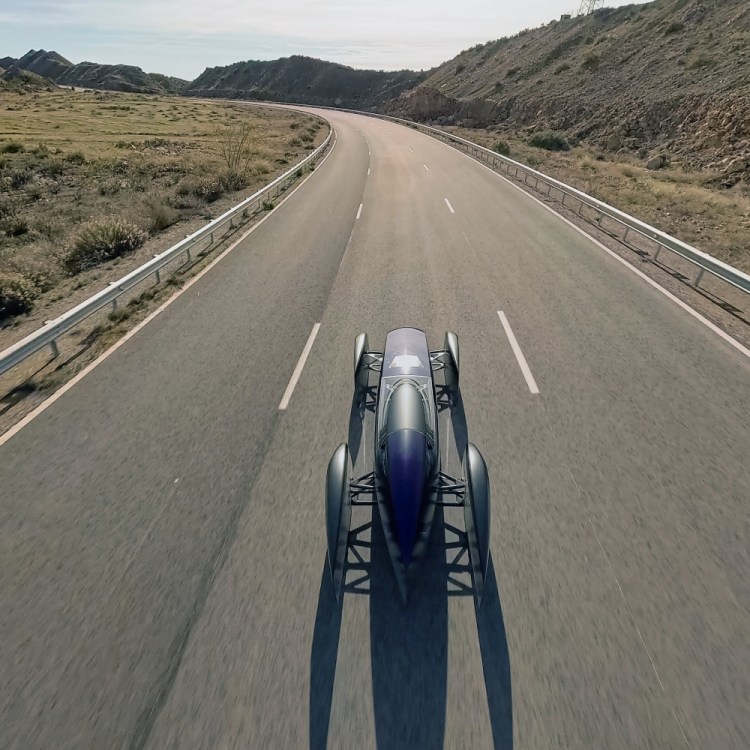When you’re buying a classic car, who can you trust to give you the unvarnished truth? Not the seller, auction house or potential Craigslist scammer. What you need is someone who actually has the car you want, which is why we started What I Wish I Knew, an automotive series in which we interview owners to get the scoop on some of the most popular dream cars. Today’s vehicle: A 1987 Jeep Grand Wagoneer.
Over the past several years, the average age of my small fleet of vehicles has grown inexorably older, largely as a counterpoint to the brand new cars and trucks that I sample on a regular basis as an automotive journalist. When it comes time to drive on my own time I prefer to do it in an automobile that in no way reminds me of my professional obligations, and that’s true whether I’m simply heading out to buy groceries or tacking down the back straight of a road course at triple-digit speeds.
One of the latest additions to my garage of geriatric automobiles combines each of the above activities into a single package. Seeking a tow vehicle so that I could finally avoid being baked alive by the hot summer sun in my late-‘70s Datsun Z on the way to the race track, three years ago I began casually shopping classic SUVs that would put the “fun” in “functional” in a way the current crop of haulers couldn’t.
Although I initially entertained ‘90s-era Ford Broncos as well as two-door GMC Yukon GTs (a model that would briefly enter my life a few years later as a cautionary tale of forgoing a professional pre-purchase inspection), my real quarry quickly became obvious: the Jeep Grand Wagoneer. These wood-paneled dinosaurs represented the final iteration of the SJ Jeep platform that originally arrived in 1963 and was then produced, largely unchanged, all the way to 1991.
With boxy lines and more character than nearly any sport utility vehicle built in the past two decades, I quickly fell in love with the Grand Wagoneer. With prices on these majestic metal beasts on the rise, I also knew I didn’t have much of a window before good quality examples had climbed outside of my pool of disposable income.
Setting out to make one mine, I endured the harsh realities of hunting down a classic SUV in a rust-prone northern climate, spent a small fortune upgrading the truck to modern specs, and came to love the quirks that come with driving a vehicle that was designed 20 years before I was born.
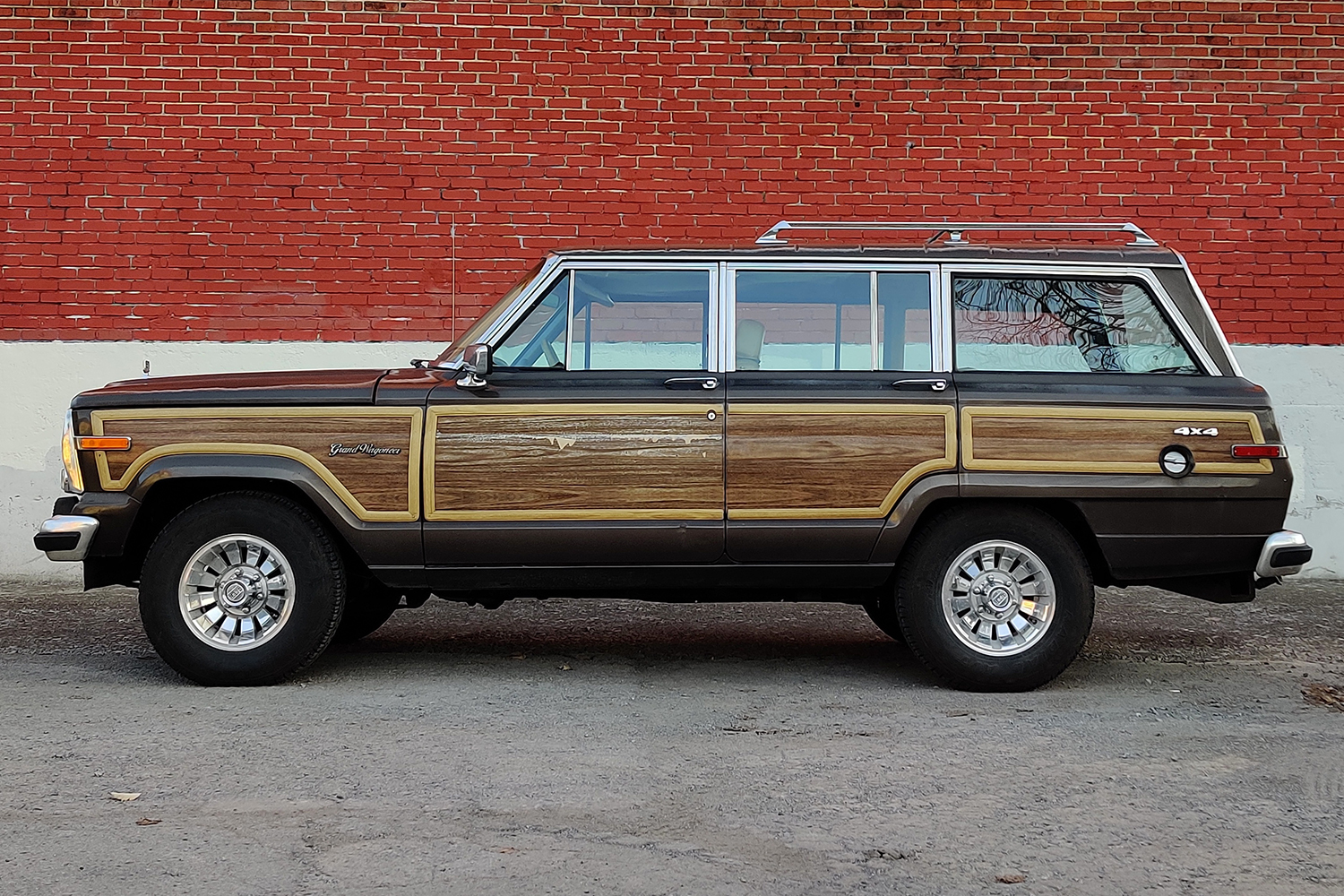
How Did I Find My Jeep?
The short story is I took out a wanted ad on Kijiji (the Canadian equivalent of Craigslist). The longer version? I got tired of answering other people’s classifieds only to discover broken-down, rusted-out rigs that weren’t worth a tenth of their asking price. It got to the point where I even had a good friend in California check out a potential West Coast purchase, only to discover that the owner (a former member of a seminal ‘70s psych-rock band) had been living in it, denting the roof with his sleeping bag each and every night.
My ad turned up exactly one prospect, and it was a long courtship. The seller had stowed his 1987 Grand Wagoneer in the parking garage of a senior’s residence, and while it wasn’t listed for sale, he was willing to let it go to a good home. It checked all of my boxes and it was remarkably corrosion-free given Montreal’s annual scatter of road salt, but I was on the verge of another ill-advised purchase (a 2003 Subaru WRX wagon). I eventually declined his very fair price and focused on other projects.
Almost exactly one year later, I hadn’t come up with any candidates that were anywhere near as solid as the one I had lingered over under the fluorescent lights of that particular storage space. I sent the owner a text out of the blue and he confirmed that it was still available, only now at a slight discount as he was on the verge of leaving the city. I didn’t need much more convincing.
What I Wish I Knew Before I Bought a 1990 Volkswagen Vanagon Westfalia
It’s not all #vanlife dreams and road trips with this classic camper van, but it’s fun for the right driver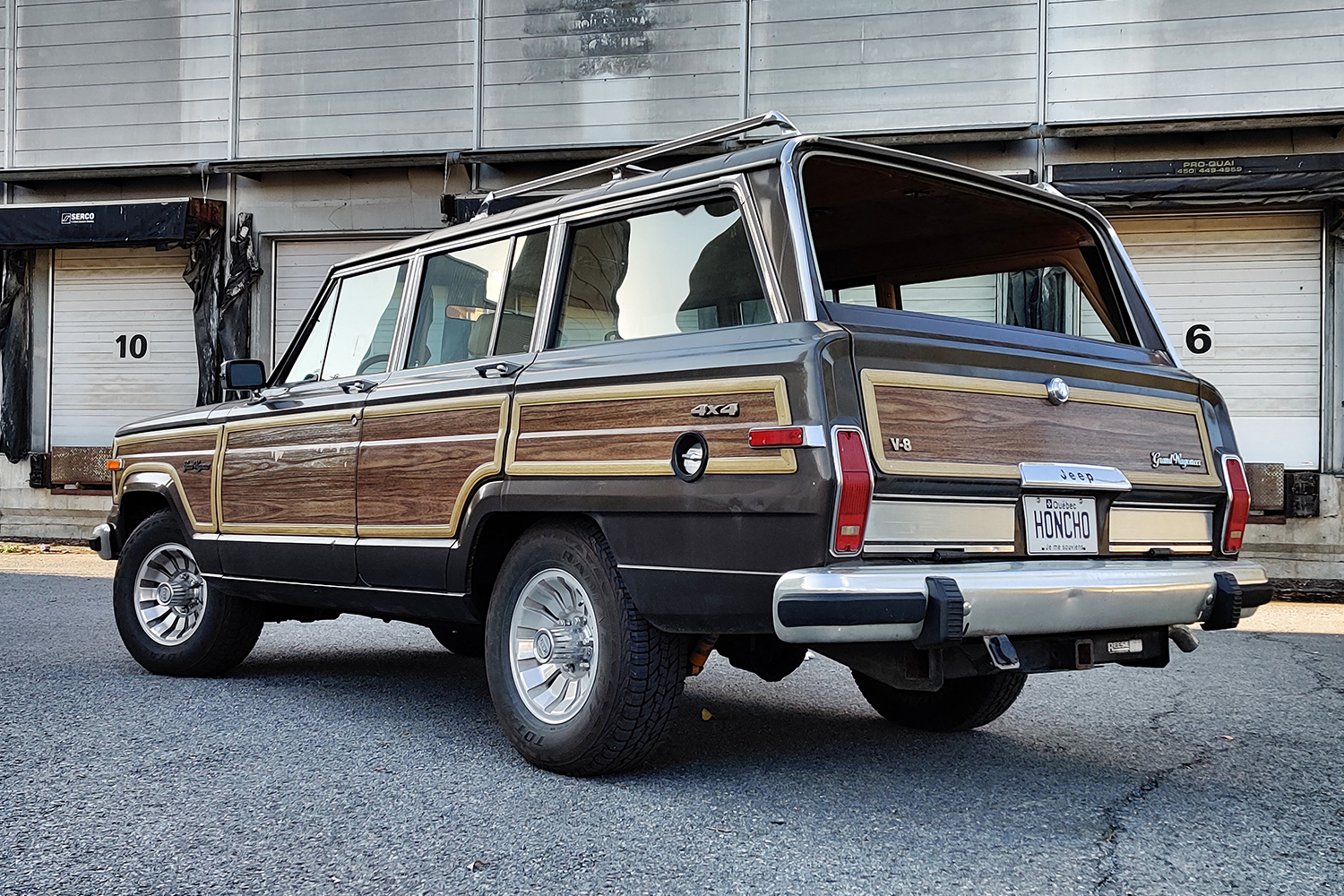
What Kind of Shape Was It In?
The number-one priority for me in finding a Jeep of this vintage was that it be rust-free. The tin worm isn’t kind to AMC metal, and I had no desire to fill the truck with Bondo or waste time trying to locate unobtanium body panels.
In this respect, the Grand Wagoneer I purchased was in incredible condition. Aside from two quarter-sized spots of surface corrosion on the driver’s side, and a few inches of buffed-through paint near the rear chrome trim, it was as-advertised. The interior had worn well too, with torn seats up front and a sagging headliner the only real issues to be dealt with.
Mechanically, it was a driver with a lot of unknowns, and non-functional four-wheel drive due to a vacuum control issue on the transfer case. I spent a summer tooling around the city with the occasional longer highway trip thrown in, and all was well until the end of the fall driving season when I began to notice steam escaping a leak in the Jeep’s radiator. Other than that — and the absolutely atrocious six miles per gallon it returned regardless of driving conditions — the Grand Wagoneer was surprisingly reliable. The A/C even blew ice cold right on my knees, where the vehicle’s only cooling vents are located.
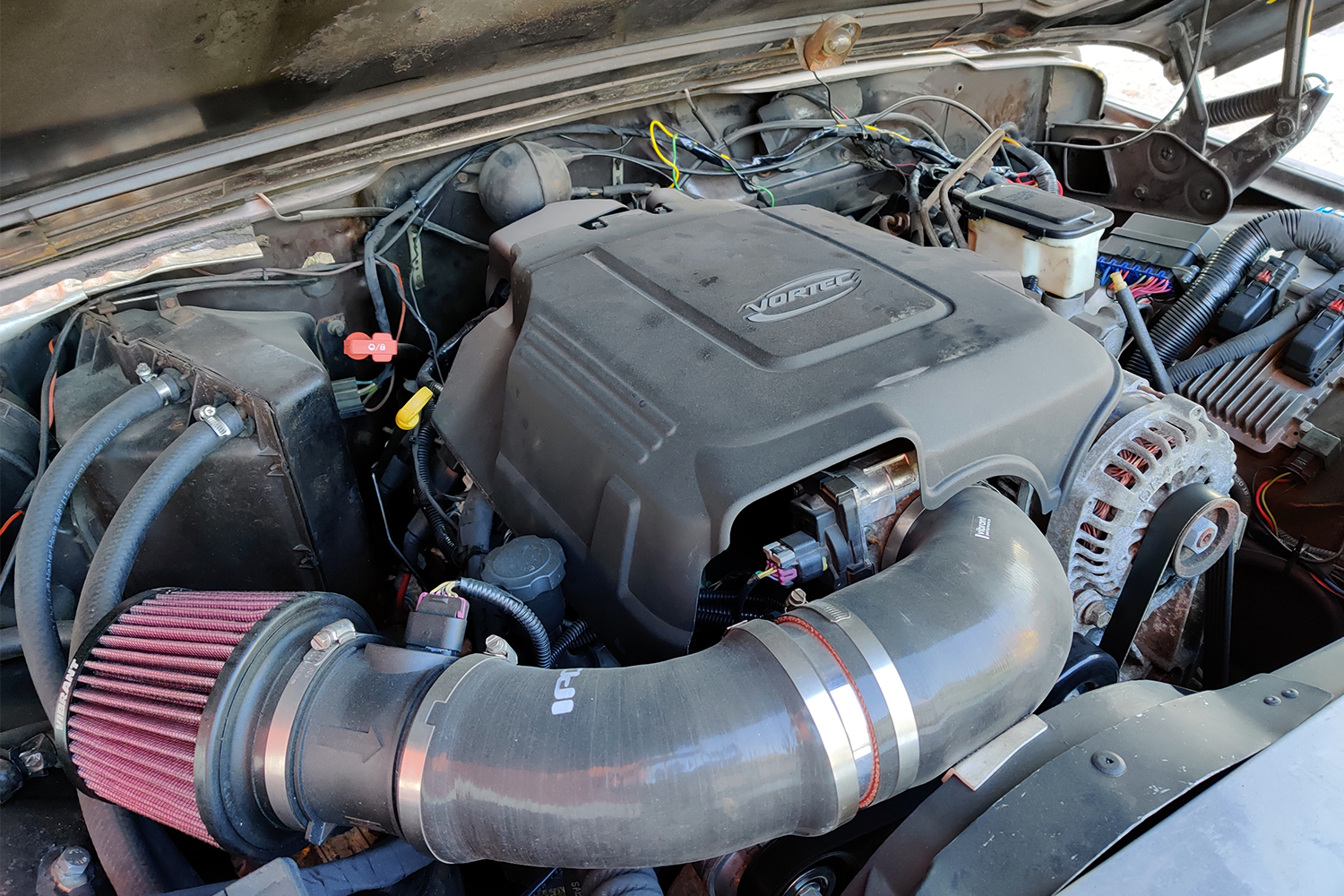
What Upgrades Did I Make?
Ultimately, I knew my luck would run out. The Jeep’s 5.9-liter V8 isn’t a particularly troublesome motor, but the Grand Wagoneer, like many AMC-built models of that vintage, had a reputation for nickel-and-diming owners to death with small issues that eventually mounted into larger hassles and potential catastrophes. The same was true of its electrical systems, which were under-engineered even by the early ‘60s standards to which it was originally held.
None of that mattered to me, however, because in truth those initial months behind the wheel were really an audition to see if I liked driving the Jeep enough to go ahead with what all of my auto industry buddies had convinced me was a truly terrible idea: swapping out the Grand Wagoneer’s running gear for a modern GM-sourced LS V8 drivetrain. The end goal? To build a classic truck with bulletproof modern reliability and vastly improved efficiency and power.
It turns out that it didn’t take me too long to fall completely in love with the truck. So began what turned out to be a year-long, nightmarish odyssey that, after numerous trials and pandemic-related tribulations (parts sourcing, shops closing, travel restrictions), ended with the Grand Wagoneer sporting the engine and transmission from a 2008 Chevrolet Tahoe, rebuilt and tuned to provide in the neighborhood of 400 horsepower while delivering roughly 20 mpg on the highway.
For those keeping score at home, that’s triple the fuel mileage and nearly two-and-a-half times the grunt of the original setup. Best of all, it fires up each and every time I twist the ignition, with no carburetor-related headaches or vacuum-leak nightmares. The truck has also been updated to include hydroboost brakes, more aggressive gearing for its Dana 44 differentials, brand-new Bilstein shocks and body mounts, and a new transfer case.
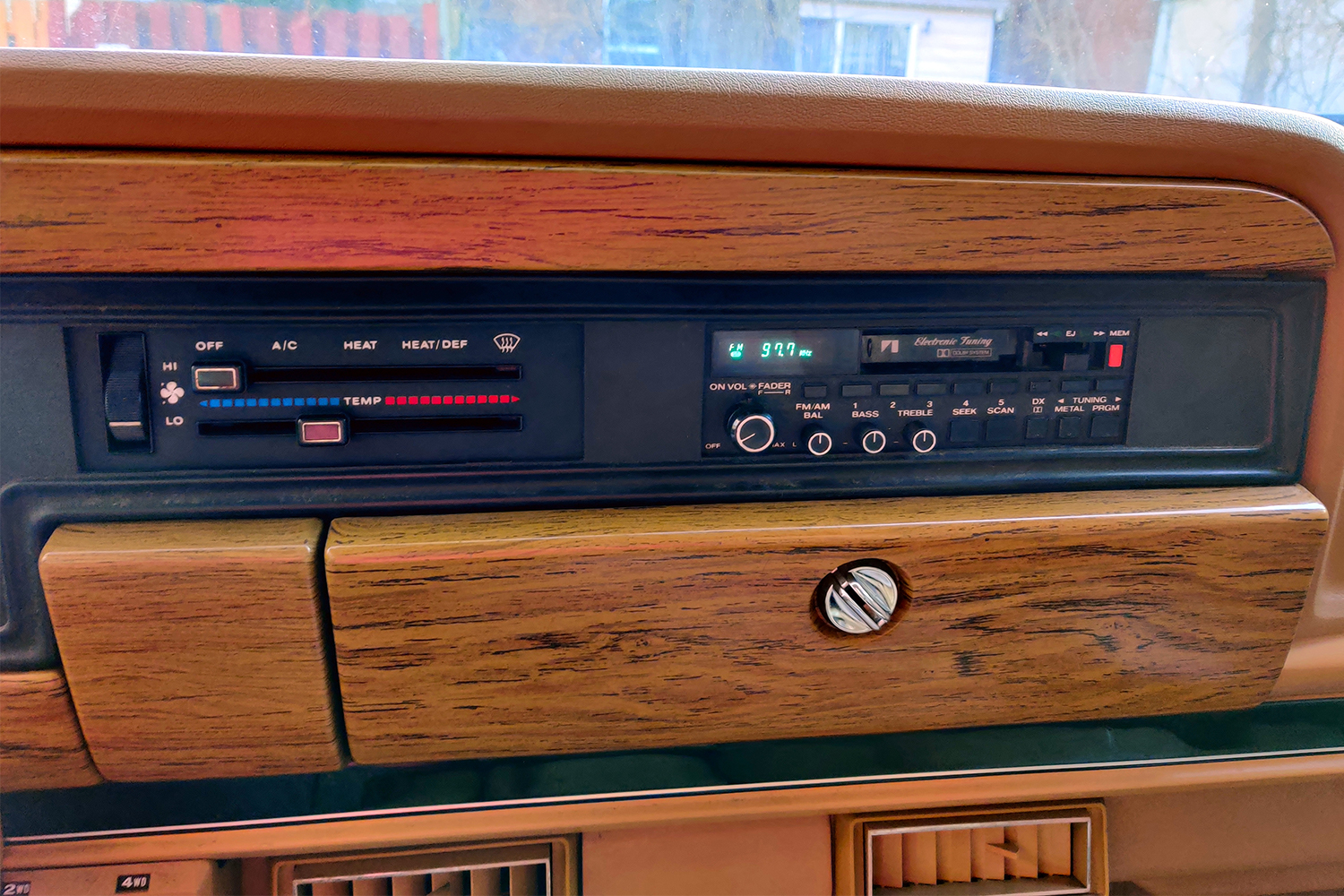
What Did I Leave Alone?
It was important to me that the Jeep retain the key elements of its character, and that included the aged patina of its sun-kissed paint. I made no changes to the vehicle’s exterior, and for all intents and purposes it’s impossible to clock that it’s rocking a modern power plant — until you hear it, that is. The 5.3-liter engine has just enough of a stumble at idle to clue you in that something’s up under the hood.
I followed through on this philosophy inside the truck, too. I didn’t want any digital gauges or any accessories that weren’t period-correct to be visible. Even the OBD-II port for accessing the vehicle’s ECU is hidden out-of-sight. This extended to my in-vehicle entertainment. After spending a summer hunting down cassettes to pop into the Grand Wagoneer’s factory tape deck, I had amassed an oversized collection of yesterday’s hits, and as a result I shipped the unit over the winter to a specialist who does nothing but rebuild Jeep audio units. For the price of a very nice MP3-capable, LCD-screen infotainment system, I now enjoy the best that magnetic media has to offer, as heard through the cost-cutting filter of late-‘80s AMC product planners.
The Most Underrated Part of the Grand Wagoneer
There are two major bonuses to Grand Wagoneer ownership. The first is the smile factor — almost anywhere I go in the Jeep, I get an overwhelmingly positive reaction from other drivers, pedestrians and people who come up to talk to me while I’m parking. With slab-wood sides and acres of glass, the upright truck looks like it just rolled off the set of a period piece, and it’s got a friendly, classy persona that’s inviting to both gearheads and people who remember seeing these things on the beach or at the ski hill back in the day.
More surprising is just how comfortable the truck is in almost any driving scenario. Given its extremely basic chassis (a pair of solid axles, leaf springs at all four corners and a body-on-frame design), it’s incredible just how smooth and relaxing the Grand Wagoneer is while cruising down the highway. Even with the extra power from the LS engine, it’s remained a very calm driving experience, as long as you make sure to slow down for anything resembling a corner. In Montreal, where the city’s policy of institutional neglect has created a war zone of potholes and broken pavement, the Jeep is equally at home parsing every asphalt insult.
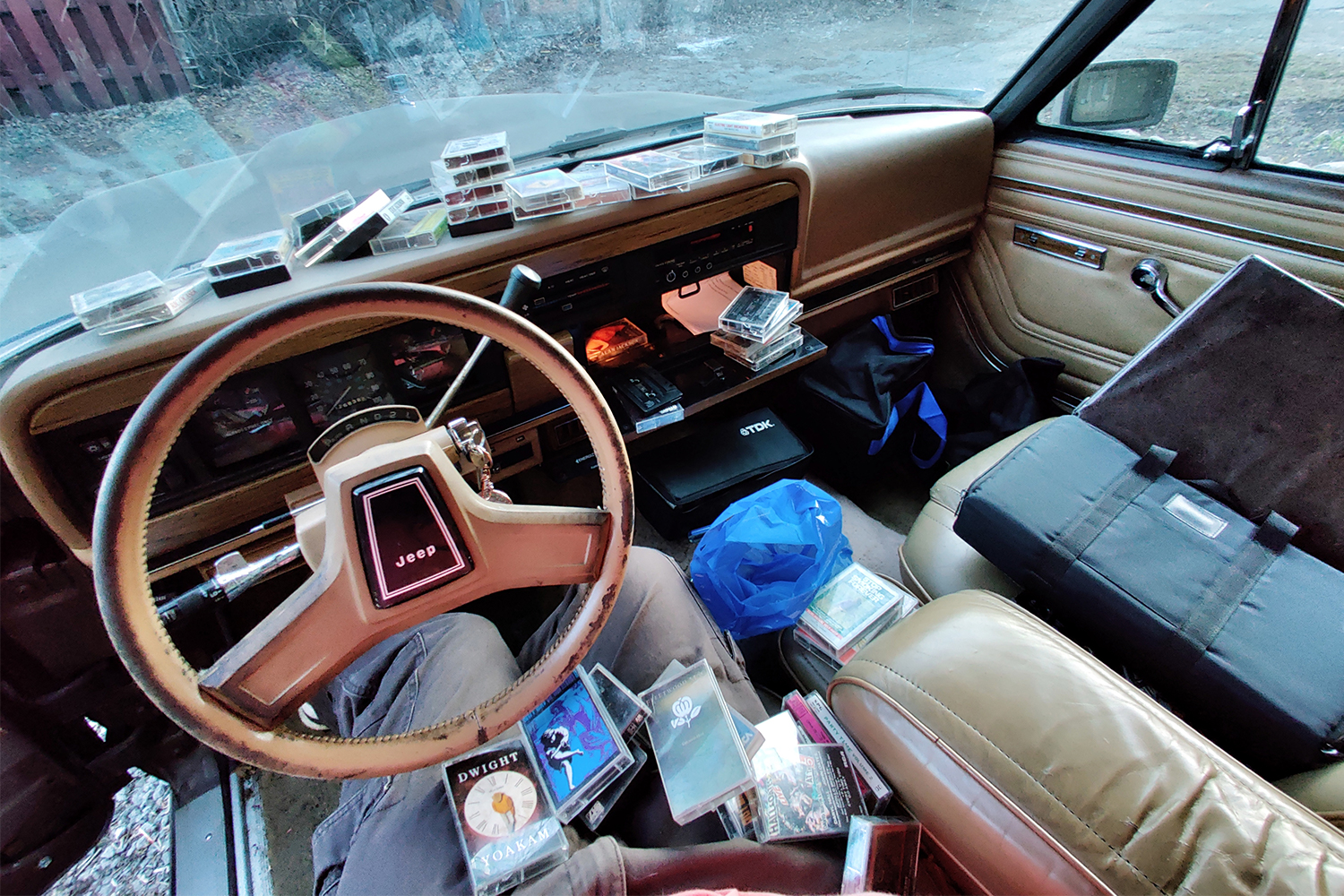
The Most Overrated Part of the Grand Wagoneer
I’m disappointed that these trucks are edging towards investments rather than classic drivers. A portion of the Grand Wagoneer market is pricing itself out of the reach of the faithful who’ve been keeping these rigs alive since production stopped in 1991, and while some of these rigs are better-than-new restorations, others are merely riding the trend. Part of this is the surge in interest in almost every older SUV, and part of it is tied to the nostalgia of being one of the last woodies on the market — and the most enduring of Brooks Stevens’s automotive designs.
What I Wish I Knew Before I Bought It
The true cost of my swap. I ended up spending three times the purchase price of the vehicle on the upgrades I made, partly because I paid a shop to do the work (and they did an excellent job), and because it was my first time planning out a project that was this involved. I ended up making some bad decisions while sourcing parts that added extra costs and time to the entire enterprise, and the shop and I had difficulties dealing with a third-party engine tuner that we could not have predicted. There were many lessons learned, and I wish I could email them through some type of temporal vortex to 2019 Benjamin and take a load of anxiety off of his plate.
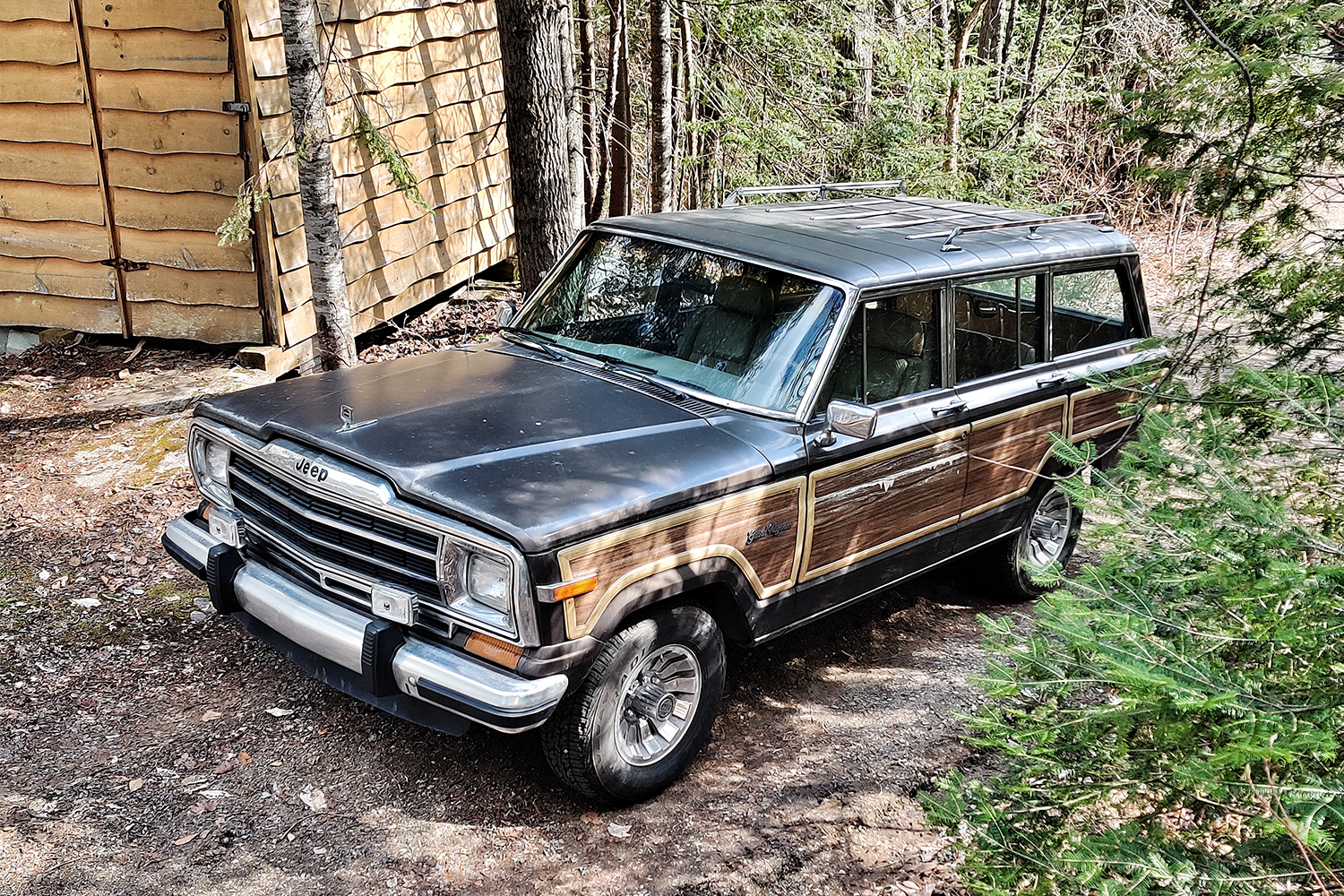
Who Should Absolutely Not Own This Vehicle?
Anyone expecting a reliable daily driver with all the mod-cons should stay far, far away from a stock SJ-body Jeep Grand Wagoneer. If you have no mechanical ability, it’s going to drain your resources fairly quickly, unless you choose to just light all of your money on fire at once like I did with my swap project, or you pick up a high-end example that’s had a full refurbishment from a reputable dealer. The fuel bill associated with even a well-kept Jeep 360 V8 is hard to swallow on a weekly basis, making them a better choice as weekenders or the third vehicle in the driveway.
The Most Memorable Experience I’ve Had
Over the last month, being able to take it out into the country and the mountains and experience it in the environment it was originally built for (as a bridge for families that needed a rugged but still urban-friendly option) has been great. To be honest, it’s still a minor miracle to me that my Jeep, which spent nearly a full year up on a lift, is now sitting in front of my garage patiently awaiting the next adventure. Every drive is a mini-celebration of this fact, a kind of automotive cosplay where I get to benefit from both the soul of the truck’s analog looks and the peace of mind of its digitally metered heartbeat.
This story was originally published on May 17, 2021.
This article appeared in an InsideHook newsletter. Sign up for free to get more on travel, wellness, style, drinking, and culture.
